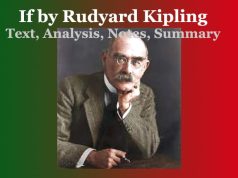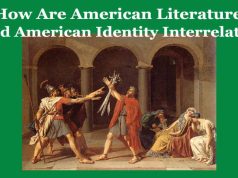The Canterbury Tales- Art of Characterization
The Canterbury Tales- Art of Characterization
Geoffrey Chaucer’s Art of Characterization in “The Canterbury Tales”
Introduction:
Geoffrey Chaucer’s “The Canterbury Tales” stands as a seminal work in English literature, showcasing a diverse cast of characters on a pilgrimage to Canterbury. Chaucer’s masterful storytelling unfolds through vivid characterizations, each pilgrim representing a unique facet of medieval society. The art of characterization in “The Canterbury Tales” remains a testament to Chaucer’s skill in depicting a wide array of personalities, offering a panoramic view of human nature within a structured narrative. Let’s discuss Chaucer’s art of characterization in ‘The Canterbury Tales’ as follows
Diverse and Multifaceted Characters:
Chaucer’s characters in “The Canterbury Tales” are remarkably diverse and multifaceted. From the pious to the ribald, the noble to the lowly, the pilgrims cover a wide spectrum of society, representing various social classes, professions, and moral values. This diversity creates a microcosm of medieval England, allowing Chaucer to explore and critique different aspects of society.
Social Commentary and Satire:
Each character embodies distinctive traits, allowing Chaucer to engage in social commentary and satire. Through their interactions and tales, he presents a satirical view of societal norms, exposing human flaws, hypocrisies, and the complexities of morality. The Wife of Bath, the Pardoner, the Miller, and the Knight, among others, exemplify this satirical exploration.
Use of Indirect Characterization:
Chaucer’s characterization often relies on indirect methods, revealing characters through their own actions, speeches, and tales. He refrains from explicitly describing characters, instead allowing their words and deeds to paint a vivid picture of their personalities, morals, and beliefs.
Stereotypes vs. Complexity
While some characters initially seem to embody stereotypes, Chaucer often complicates these portrayals. Characters like the Pardoner or the Wife of Bath, who might appear as stock figures at first glance, are revealed to possess layers of complexity and depth, challenging simplistic categorizations.
Realism and Individuality:
Geoffrey Chaucer‘s characters possess a sense of realism and individuality, making them relatable and authentic despite their exaggerated traits. Their distinct voices, personal anecdotes, and conflicting views contribute to a vibrant and authentic portrayal of human nature.
Function within the Framed Narrative:
Each character’s tale not only serves as entertainment but also holds significance within the overarching narrative. These tales often reflect or contrast with the character’s persona, revealing deeper layers of their personalities and beliefs.
Conclusion:
Chaucer’s “The Canterbury Tales” is a testament to his unparalleled skill in characterization, showcasing a rich tapestry of diverse, multifaceted, and realistic individuals. Through these characters, Chaucer engages in a subtle yet incisive critique of medieval society, offering a timeless portrayal of human nature and societal dynamics. 0 0 0.
The Canterbury Tales- Art of Characterization
You May Like:
- Al-Hutayah-His Life and Poetic Career
- John Donne’s Poetry-Chief Characteristics
- Birth & Development of Arabic Poetry
- Chief Characteristics of Modern English
- Birth & Development of Arabic Prose
- Chief Characteristics of Old English
- Medieval Romance-Chief Characteristics
- The Mahabharata by Vyasa-Review
- Kamala Das-A Losing Battle-An Analytical Study
- John Dryden’s Mac Flecknoe as a Mock Heroic Poem
- Henry Derozio’s To the Pupils of Hindu College-Analysis
- Toru Dutt’s Poetry-Chief Features
- Robert Souithey’s The Scholar-Analysis
- H Deroio’s Song of Hindustanee Minstrel-Analysis
- Derozio’s Chorus of Brahmins-Analysis







